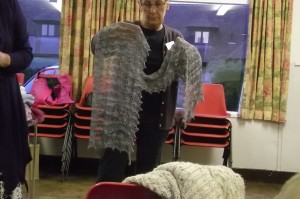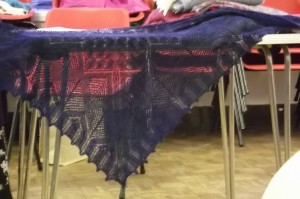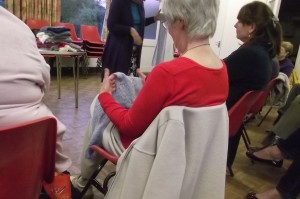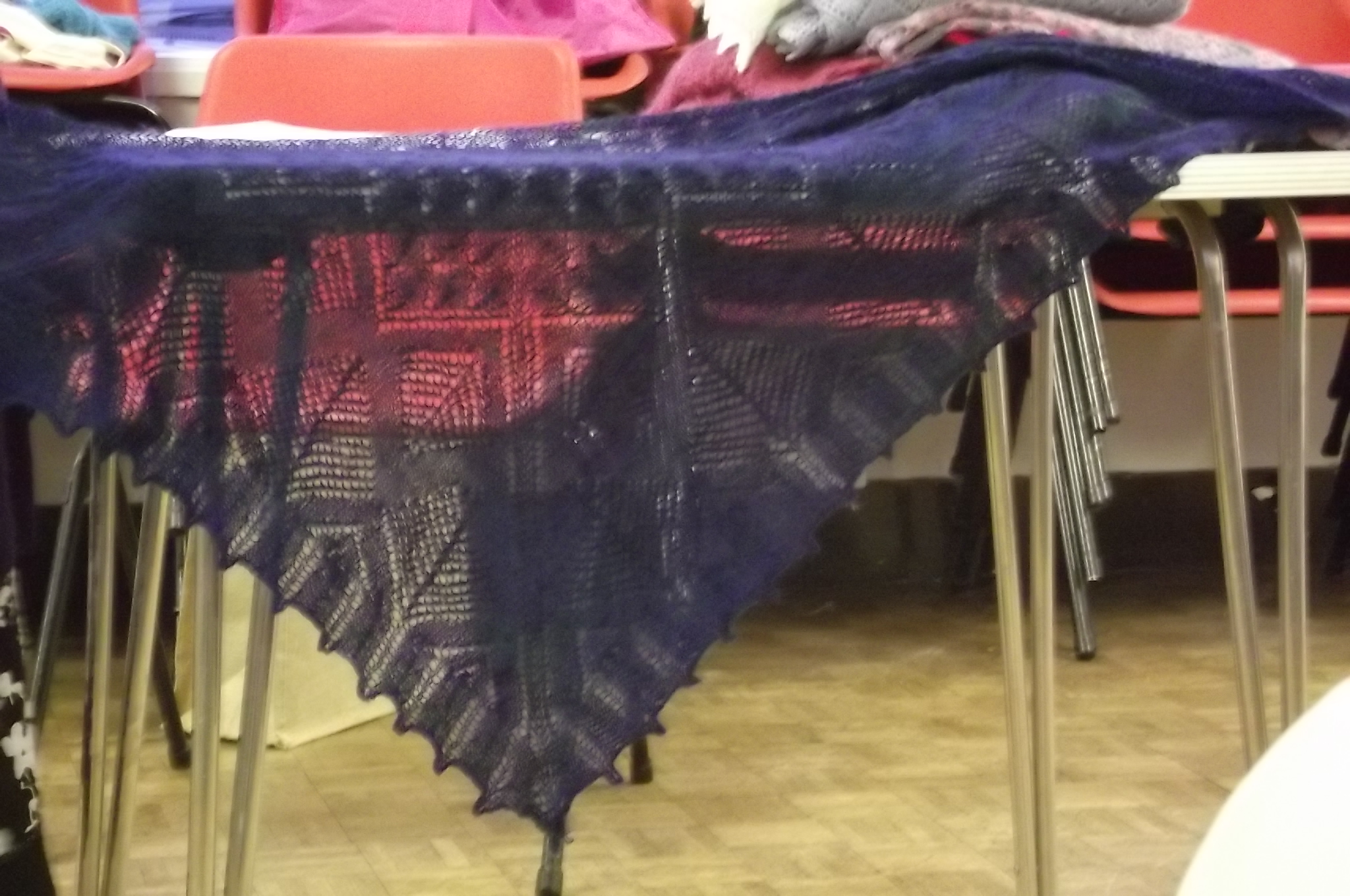Speaker: Chris Williams on Hand Knitted Shawls from all over the world.
Chris Williams, inspired by a book and with the added bonus of retirement from her job in accountancy fell in love with lacy knitting and in particular shawls.
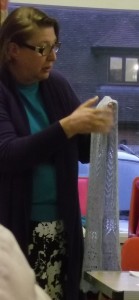
She took us through the history of knitting in Britain and the Shetlands in particular, how lace patterns are constructed and then how to knit the shawls. Despite having a long history dating back to the Egyptians, and a fine tradition in England due to our excellent sheep producing high quality yarns it wasn’t until the 1800’s that “knitting receipts”, the first patterns were recorded for lace knitting.
Amongst the best know of the shawls are those knitted in the 1ply cobweb wool produced from the fine under fleece of the Shetland sheep. They are commonly known as wedding ring shawls as an 8 foot square (yes I know we are metric now but not then) shawl can pass through a wedding ring. These days to buy one of these fine shawls is likely to cost around £500. The Shetlanders also knitted while they were on the move using heavier wools to produce Hapenshall shawls. Shawls are rarely produced by knitting a conventional square, usually they are made by knitting a triangular formation starting with as few as five stitches and the casting off of 800 stitches. Chris also showed us examples of Faroe, Icelandic (with tails that are tied behind the back) and Russian Orinburg (geometric shaped patterned) shawls. She uses a wide variety of years but many of those at the meeting agreed that the grey slik shawl was their favourite.
Chris knits for pleasure and does not sell her shawls, she prefers, if she does not give them to friends and family, to sent them to her favourite charities to raise money.
